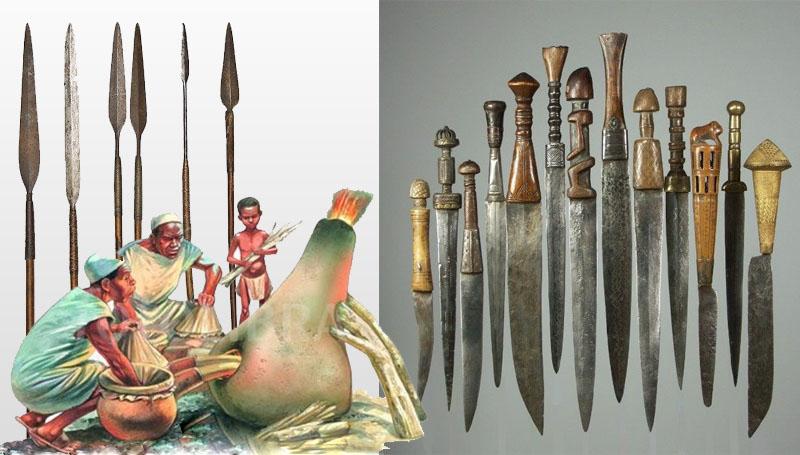Steel was produced in East Africa over 2000 years ago
Since the invention of modern steel in 1847, we now discuss the Bessemer process for producing carbon steel. Carbon steel, on the other hand, had been produced much before Kelly or Bessemer. The Haya people used one of the oldest and most advanced ways. They are an African tribe living in what is now Tanzania. Before modern steel, the Hayas manufactured high-grade carbon steel for almost 2000 years.
The Haya people of Tanzania can be credited of a remarkable discovery made centuries before many apparently more advanced Europeans. That discovery was how to create steel with with the materials they had on hand.
The Haya built kilns out of the mud from termite mounds, forming a five-foot-high cone and filling the kiln’s bed with burnt swamp reeds, charcoal, and iron ore. Eight men used hand-operated bellows to push air into the mechanism, raising the temperature high enough to raise the carbon level, and voila! Steel was created.
This procedure was so excellent that it didn’t change much until the mid-twentieth century, when Tanzanians were able to buy cheap foreign kilns. Despite the fact that other countries had created steel before the Haya, the Haya discovered the discovery totally on their own, which is a remarkable achievement.
Steel, as you are probably aware, is still a vital component of many businesses today. Steel, unlike its base metal, iron, is much lighter and ductile, allowing it to be molded into a variety of shapes. The Haya gained a strategic advantage over their competitors by making the discovery so early.
The Hayas manufactured their steel in a five-foot-high kiln shaped like a truncated upside-down cone. Termite mound clay was used to make both the cone and the bed beneath it. Termite clay is an excellent refractory substance. The Hayas piled burnt swamp reeds into the kiln’s bed. Above the burnt reeds, they piled a mixture of charcoal and iron ore. They toasted iron ore before loading it into the kiln to increase its carbon content.
The Haya iron process relied on a high working temperature. With hand bellows, eight men seated around the kiln’s base pumped air in. Clay conduits carried air through the fire. The heated air was then blasted into the charcoal fire. As a result, the process was significantly hotter than anything previously known in Europe.
Peter Schmidt, an anthropologist, wanted to observe an operating kiln, but there was a snag. Early in this century, cheap European steel products entered Africa, putting the Hayas out of business. They’d stop creating steel when they couldn’t compete any longer.
Schmidt challenged the tribe’s elders to recreate the high-tech of their youth. They agreed, but it took five tries to piece back together all of the elements of the complex old method. The sixth attempt resulted in a beautiful, tough steel. It was the same steel that had served the peoples of Subsaharan Africa for two millennia before being practically forgotten.
The origins of this old African steel may be traced back to pure human inventiveness. This complex metal, made from simple native elements, is a silent tribute to the mind’s power over matter.
 The African History Truly African
The African History Truly African

